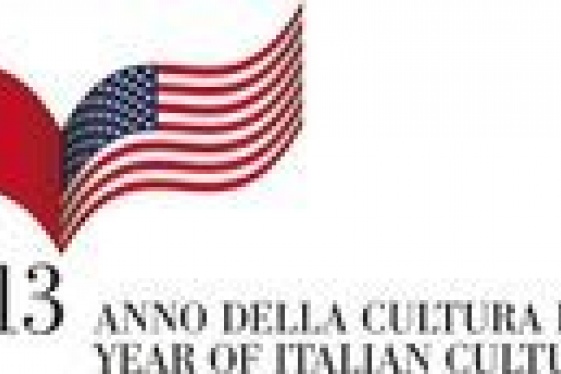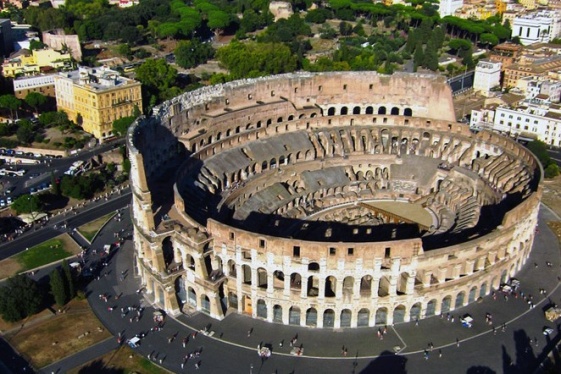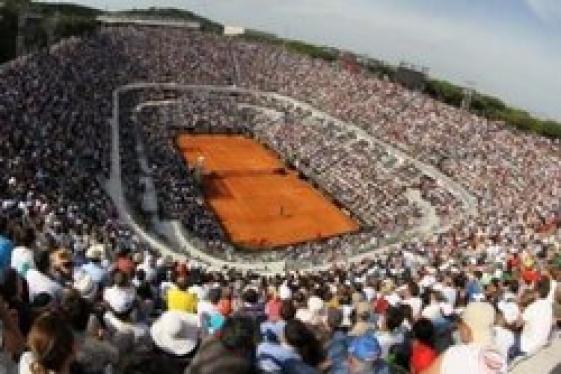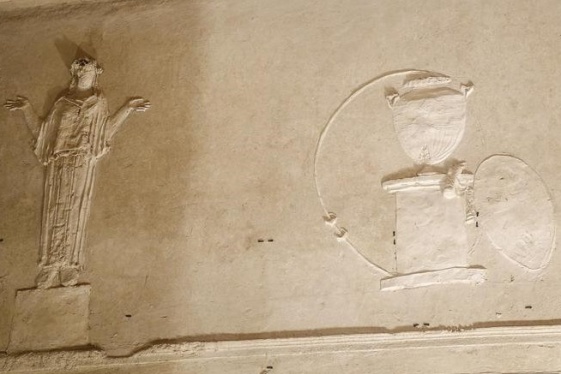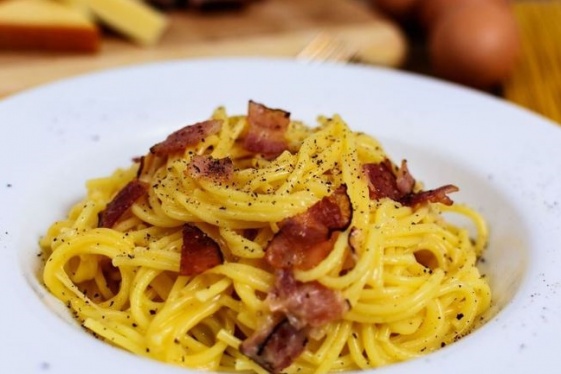

WTI Magazine #82 2016 August 19
Author : Enrico de Iulis Translation by:
There are forms of street art that contain other forms of art, and then propose them in a new and altered way. The Ro.Bo.Coop collective has become almost an emblem about these intentions, a true inventive phenomenon that is attracting more and more attention in terms of the new proposals of urban art in Italy. The concept behind the works of Ro.Bo.Coop. (acronym for Roma – Bologna -Cooperation) is the inclusion of works of contemporary architecture in Renaissance paintings, an idea that was born from the collaboration of two students of architecture. The great works of the twentieth century, created by the minds of the greatest contemporary architects, find a new location in views and panoramas painted in the fifteenth and sixteenth centuries.
The work is painstaking, because it requires a careful chromatic balance to be respected, so that everything appears coherent and plausible: and the effect is amazing and alienating at the same time. At first glance, the picture seems to be the same: and then you realize the intruder's background that does not stride and does not emerge and lets the whole operation on a fully postmodern plan.
The implications of this kind of vision are many. The first is the reduction of the artwork: being proposed on a poster size, many times it finds location in stucco frame of a Roman Baroque facade, or perhaps in a bind window in the street floor of a Renaissance palace. Those who admire this new artwork are brought on a different perspective in viewing the painting, larger and closer than the original of a museum or a fresco, while remaining blocked in comparison to the contemporary architecture included in the background, not being able to get closer as they could do if they was actually sitting in front of the original. This double meaning is the strength of the inventions of Ro.Bo.Coop.
So the Velasca Tower appears inside Veronese's "Last Supper"; Perugino's "Delivery of the Keys" is relocated in a hypothetical Brasilia recognizable by Oscar Niemeyer's Cathedral; "The Marriage of the Virgin" by Raphael takes place in the outskirts of Rome in front of the Jubilee Church designed by Richard Meyer.
From the philological point of view, this pairing is a two-faced reading. Because on one hand, as we mentioned, the final effect of the inclusion is anachronistic and postmodern; on the other one, we have a transaction that the painters from the Renaissance already did. In fact, they used to have existing monuments from the classical antiquity as a backdrop to their paintings: but not necessarily relocating in a relevant way the surrounding landscape, or not making topographically recognizable the real city where the monument would stand.
Dozens of works of the young duo of artists/architects have been shown at events such as the Rome Open House, or the current Biennale of Architecture in Venice, each time creating surprise and amazement in their increasingly interesting and meaningful combinations.
You may be interested
-
A Week in Emilia Romagna: An Italian Atmosp...
The Wine Consortium of Romagna, together with Consulate General of Italy in Boston, the Ho...
-
Emanuele: cervello d'Italia al Mit di Boston
Si chiama Emanuele Ceccarelli lo studente del liceo Galvani di Bologna unico italiano amme...
-
Exciting Palatine. Interview with Clementina...
You can tell she fills with excitement when she has the chance to show an important archae...
-
Italian Open's History and Records: A tale o...
For Italians, and Romans in particular, the Open is not just a tennis tournament where cha...
-
'Basilica of Mysteries' reborn in Rome
The so-called 'Basilica of the Mysteries' has been reborn in Rome. The basilica, one of th...
-
'Carbonara Day' celebrates famous pasta dish
On Friday, April 6, the world will celebrate "Carbonara Day", an occasion launched by the...
-
'Crimebuster', Lou Dematteis: "Se il papà ita...
"I miei nonni vengono tutti dall’Italia, sono emigrati tra il 1903 e il 1910. Entrambi i m...



